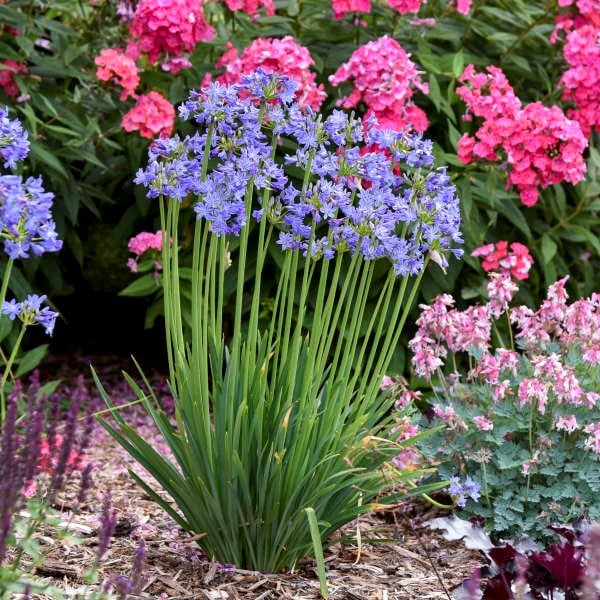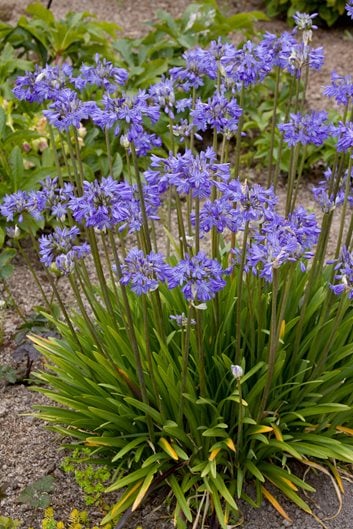Unleashing the Secret to Successful Agapanthus Farming: Tips and Tricks for a Flourishing Yard
In the world of gardening, growing agapanthus efficiently requires a tactical method that includes numerous facets of plant care. With careful interest to information, one can open the secrets to supporting these stunning blossoms, bring about a garden that flourishes with elegance and vibrancy. By recognizing the nuances of agapanthus farming, one can create an atmosphere where these plants thrive and flower abundantly. In the adhering to discussion, we will discover essential suggestions and tricks that will certainly guide you towards a growing agapanthus garden, offering insights into ideal practices, dirt problems, watering methods, and extra.
Growing Agapanthus: Best Practices
When planting Agapanthus, appropriate soil prep work is important for making sure effective development and advancement of these attractive flowers. Agapanthus, generally referred to as Lily of the Nile or African lily, thrives in well-draining soil with a slightly acidic to neutral pH degree - Agapanthus. Prior to growing, it is important to amend hefty clay soils with organic matter such as garden compost or peat moss to enhance drain and supply vital nutrients for the plants
To grow Agapanthus, choose a place that gets full sunlight to partial color, as this will advertise healthy growth and plentiful blooming. Dig an opening two times the diameter of the plant's root sphere and position the Agapanthus at the exact same deepness it was previously growing. Gently backfill the hole with dirt, pressing down strongly to eliminate any kind of air pockets around the roots.
Water the freshly planted Agapanthus thoroughly and proceed to keep the soil equally moist, especially during the plant's active expanding season. Agapanthus. Applying a balanced plant food once a month can further sustain the plant's growth and blooming. By adhering to these best practices for growing Agapanthus, you can develop a stunning screen of these exciting flowers in your yard
Suitable Soil Issues for Agapanthus
For optimum growth and blooming success of Agapanthus plants, ensuring the soil conditions are suitable is vital. Agapanthus chooses dirt that is rich in nutrients, so integrating a balanced plant food during the growing period can promote healthy and balanced growth and lively blossoms.

Watering and Feeding Tips
To make sure healthy growth and lively blooms, correct watering and feeding strategies are necessary for effective Agapanthus growing. Agapanthus plants gain from normal watering, specifically throughout the growing season. It is suggested to water deeply as soon as a week, guaranteeing the soil is moist but not saturated. During heat or in pots, even more constant watering may be needed to stop the soil from drying out entirely.
When it involves fertilizing Agapanthus, a well balanced fertilizer with equal components nitrogen, phosphorus, and potassium can be applied in the springtime to promote healthy growth and blooming. Slow-release fertilizers are ideal for giving nutrients progressively over a prolonged duration. Avoid over-fertilizing, as this can lead to too much see here now vegetation development at the expenditure of blooms.
Additionally, including raw material like compost into the soil can enhance nutrient levels and improve dirt structure, helping in the total health and wellness of the Agapanthus plants. By following these watering and feeding suggestions, garden enthusiasts can guarantee their Agapanthus plants flourish and create magnificent screens of blossoms.
Trimming and Deadheading Techniques
Proper pruning and deadheading methods play an important role in preserving the health and wellness and appearances of Agapanthus plants, matching the essential techniques of watering and feeding for effective farming. Trimming Agapanthus includes eliminating invested blossom heads, dead or yellowing leaves, and total shaping of the plant to promote much better growth. Deadheading, the procedure of eliminating faded blossoms, not just enhances the plant's look yet likewise urges further growing.
When deadheading Agapanthus, it is suggested to clip off the blossom stem at the base using sharp, clean shears. This process reroutes the plant's energy from seed manufacturing back right into origin and foliage growth, promoting a much healthier and more robust plant. Routine deadheading can prolong the growing duration of Agapanthus and prevent self-seeding, which can lead to overcrowding.
In regards to pruning, Agapanthus normally gain from a light trim after blooming to clean up the plant and encourage fresh development. Reducing the invested blossom stems and getting rid of any damaged or dead foliage helpful hints helps maintain the plant's vigor and overall appearance. Nevertheless, it is necessary to avoid cutting right into the crown of the plant, as this can deteriorate its health and wellness.

Protecting Agapanthus From Vermins and Diseases
Executing effective insect and condition monitoring strategies is crucial to securing the health and vitality of Agapanthus plants in cultivation. One usual bug that influences Agapanthus is the Agapanthus borer, a caterpillar that tunnels right into the plant, causing damage to the fallen leaves and flowers.
Along with parasites, Agapanthus are prone to illness such as root rot and fungal leaf places. These concerns can commonly be prevented by making sure correct drainage and preventing overwatering. Impacted components of the plant need to be without delay eliminated to protect against more spread if signs of disease show up. Fungicides may likewise be used as a therapy step, complying with the maker's guidelines meticulously. By staying watchful and dealing with bug and illness problems immediately, gardeners can help their Agapanthus thrive and flourish.

Final Thought
Finally, effective cultivation of agapanthus needs proper growing techniques, suitable soil conditions, adequate watering and fertilizing, routine trimming and deadheading, and protection from parasites and illness. By adhering to these methods and pointers, gardeners can make sure a flourishing garden full of stunning agapanthus blossoms. Agapanthus. Remember to preserve consistent care and interest to detail to promote the wellness and long life of these stunning plants
When growing Agapanthus, proper dirt prep work is important for making sure successful growth and advancement of these beautiful flowers.Water the newly grown Agapanthus extensively and proceed to maintain the dirt equally wet, particularly throughout the plant's active growing season.For ideal development and growing success of Agapanthus plants, making certain the dirt problems are ideal is essential. When growing or hair transplanting Agapanthus, guarantee the dirt is well-prepared to provide the necessary foundation for the plants to develop themselves Continued effectively. One usual insect that influences Agapanthus is the Agapanthus borer, a caterpillar that tunnels into the plant, triggering damages to the leaves and blossoms.